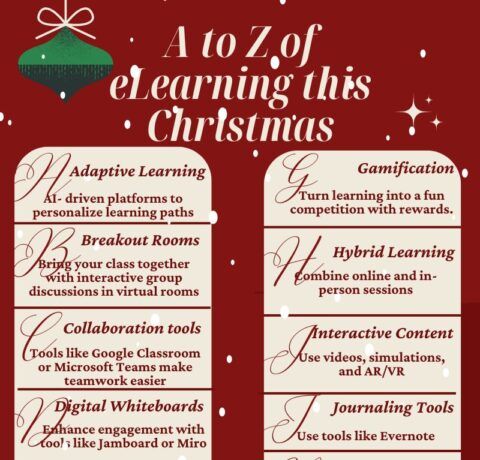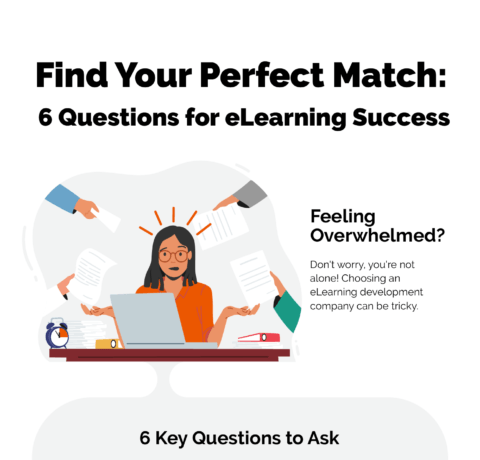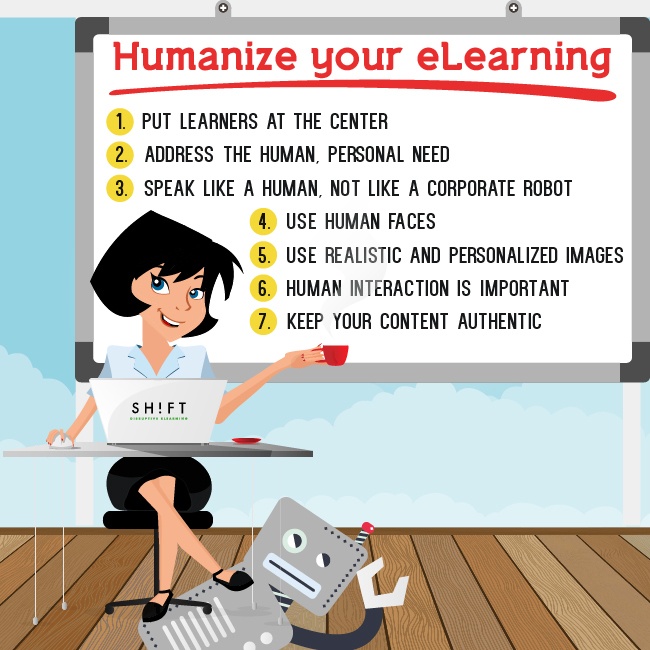How to Humanize eLearning Infographic
eLearning at its core is about connecting with your learners. And to do this effectively, your content has to be relatable and humanized. The How to Humanize eLearning Infographic provides useful tips that can help you humanize your content in order to resonate with your learners.
1. Put learners at the center
Learning starts at the individual level. When the eLearning designer finds a way to allow a learner to embrace learning set up to maximize their own needs and talents, the learner is taking more responsibility, and the atmosphere becomes more learner-centered. When eLearning courses pay attention to the diversity between learners, take into account how learners learn best, their feelings and desires, and there is an atmosphere that respects each learner, the learner self-directs their learning to find their purpose and goals for learning. Failing to do this can make a huge difference in the success of the course.
2. Address the human, personal need
An important part of any eLearning course is the content, but learners don’t just need to know what they are supposed to learn, they want to understand the practical application of that content. Behind the professional, logical need there is a human need.
3. Speak like a human, not like a corporate robot
- Write in the second person. Call the learner “you” to personalize “your” writing.
- Write in a conversational tone using fairly short sentences.
- Read what you write out loud. You can catch many mistakes in your own writing by following this rule of thumb.
- Don’t waste words. Whether spoken aloud or in writing, wordiness loses the audience.
- Use contractions. It makes you sound less robotic.
- Ensure that what you write is clear. No one wants to read something that they have to decipher, and that is especially true when trying to reach a learner on a personal level.
4. Use human faces
Use pictures of humans who can adequately express feelings and values you could otherwise not express. A picture really can be worth 1000 words, as long as the right picture is used. It is also wise to use faces that resemble the target audience.
5. Use realistic and personalized images
Photos of real people, at real locations, and if possible even in real situations can also make things feel more personal. By using real photos, the learner develops a sense of trust and develops a feeling of personalization.
6. Human interaction is important
eLearning is at its best when the learner is regularly exposed to consistent feedback from a faculty member or instructor; when there is a community of learners to give various points of view on topics, as well as feedback; and when feedback is given and that feedback can encourage growth. Online discussion forums and video links are great opportunities for learners to communicate and provide feedback to each other.
7. Keep your content authentic
Real eLearning involves access and engagement to learning and to the process of learning. One incredibly important part of authentic learning is applying knowledge to situation that is either real world, or a very good simulation of a real world situation. The other important part of authentic learning is reflection. Communicating with other learners and instructors about what was learned, or perhaps what is still fuzzy from attempted learning makes eLearning authentic.







You can adjust your cookie preferences here.